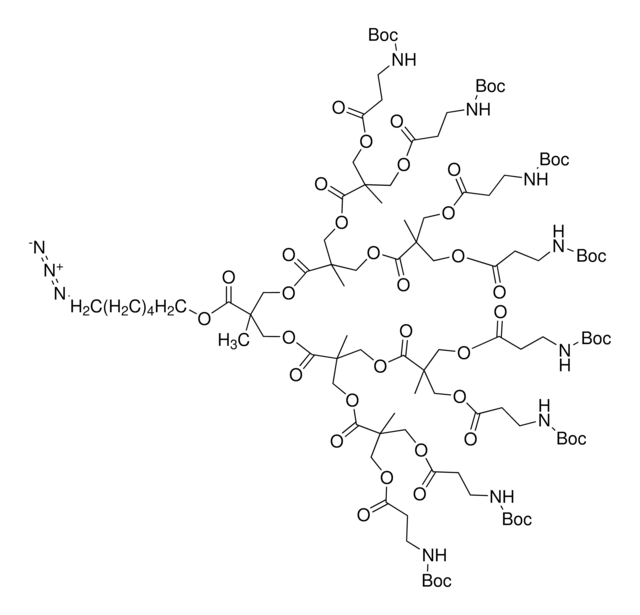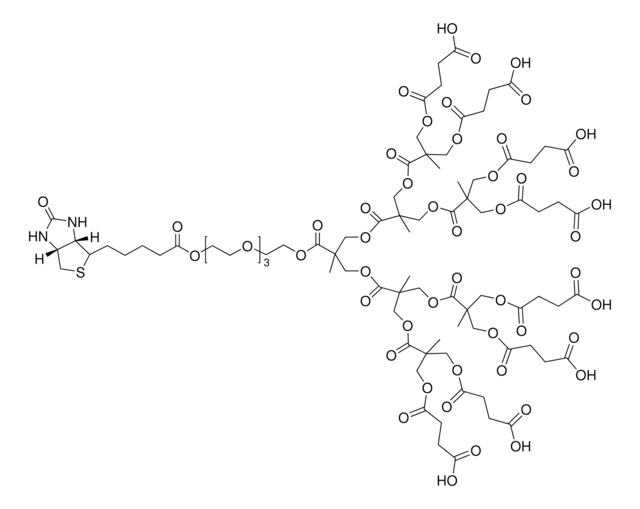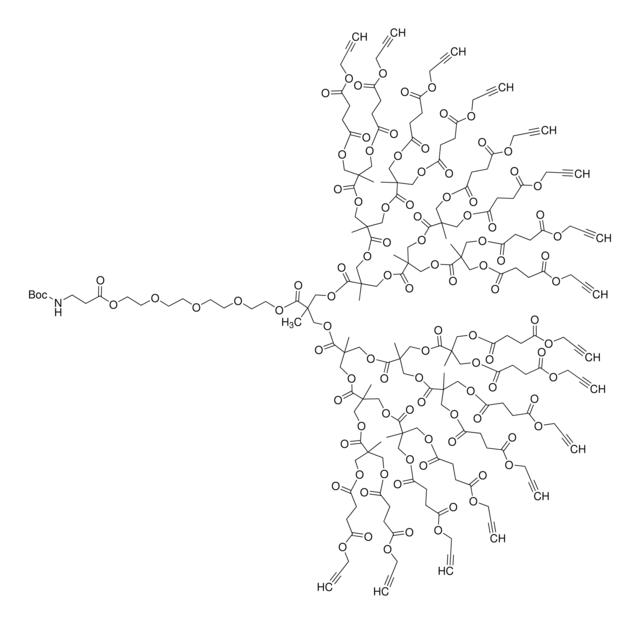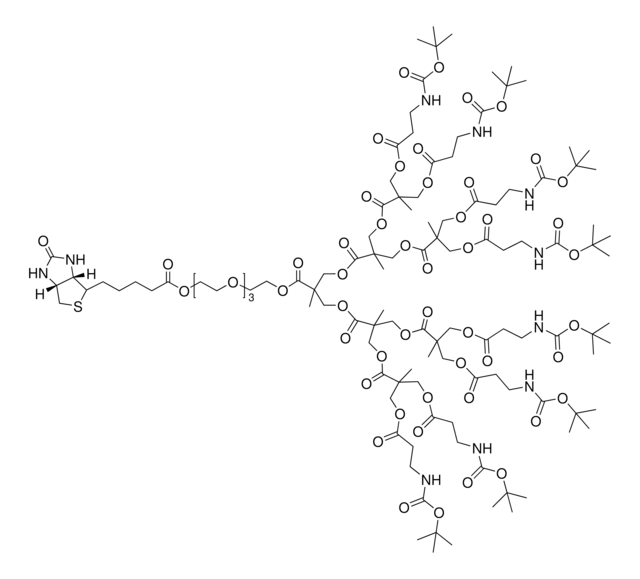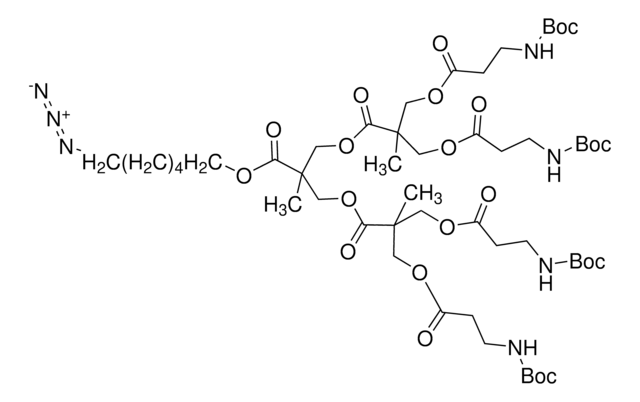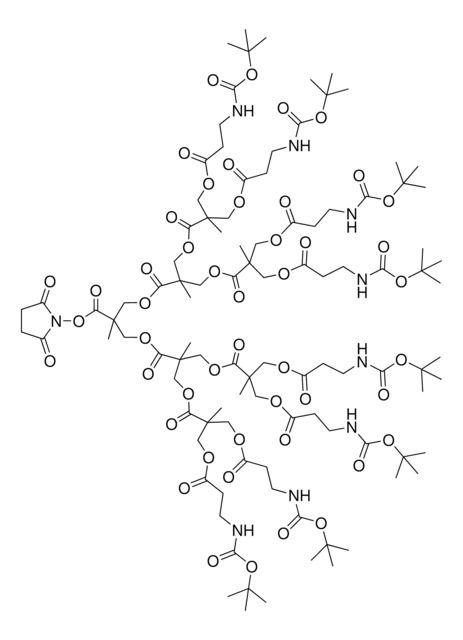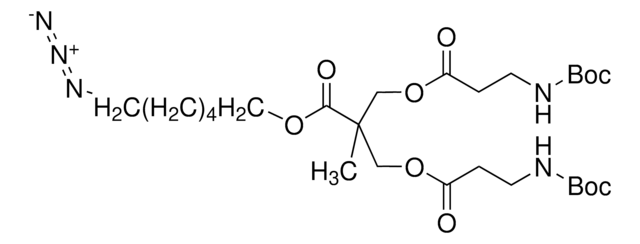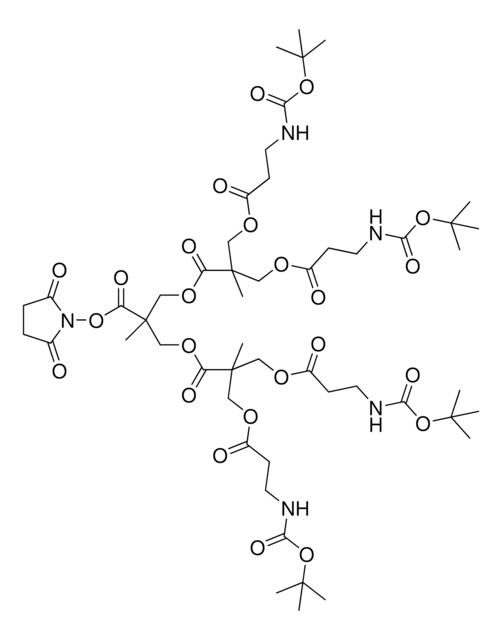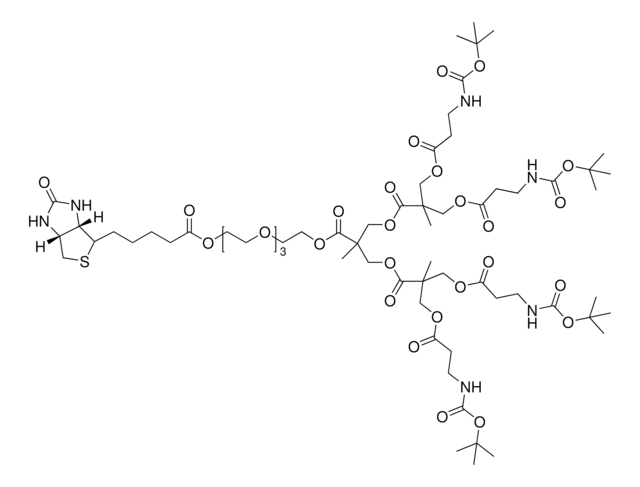901376
Polyester bis-MPA dendron
no. Surface Groups 8, 8 acetylene, 1 NHBoc (core), generation 3
Synonyme(s) :
PFd-G3-BOCNH-Acetylene, bis-MPA dendron
About This Item
Produits recommandés
Niveau de qualité
Forme
solid
Poids mol.
generation 3
Nb de groupes de surface
8
Couleur
white to off-white
Température de stockage
−20°C
Catégories apparentées
Description générale
- Polymer architecture: Dendron
- Generation: 3
- Core functional group: Boc-protected amine
- End Group Functionality: Alkyne
- No. Surface Groups: 8
- Calculated Mol. Wt.: 2283.21 g/mol
- Boc : tert-Butyloxycarbonyl
- bis-MPA : 2,2-Bis(hydroxymethyl)propionic acid
Application
Code de la classe de stockage
11 - Combustible Solids
Classe de danger pour l'eau (WGK)
WGK 3
Point d'éclair (°F)
Not applicable
Point d'éclair (°C)
Not applicable
Faites votre choix parmi les versions les plus récentes :
Certificats d'analyse (COA)
Vous ne trouvez pas la bonne version ?
Si vous avez besoin d'une version particulière, vous pouvez rechercher un certificat spécifique par le numéro de lot.
Déjà en possession de ce produit ?
Retrouvez la documentation relative aux produits que vous avez récemment achetés dans la Bibliothèque de documents.
Articles
Professor Michael Malkoch provides an overview of the unique properties of dendritic molecules and their application in biomedical fields. He highlights bis-MPA dendritic scaffolds as a promising biodegradable and biocompatible platform for drug delivery applications
Notre équipe de scientifiques dispose d'une expérience dans tous les secteurs de la recherche, notamment en sciences de la vie, science des matériaux, synthèse chimique, chromatographie, analyse et dans de nombreux autres domaines..
Contacter notre Service technique